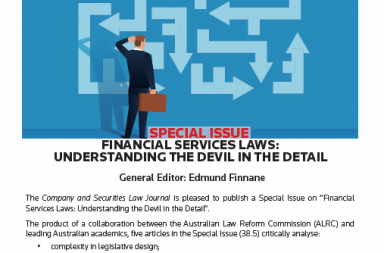*Please note that the links to the content in this Part will direct you to Westlaw AU.
To purchase an article, please email: [email protected] or contact us on 1300 304 195 (Australian customers) or +61 2 8587 7980 (international customers) during business hours (Mon-Fri, 8am-6pm AST).
The latest issue of The Tort Law Review (Volume 28 Part 1) contains the following material:
Articles
Questioning the Social Utility of Social Utility in the Australian Civil Liability Legislation – Leigh Smith and Vernon Nase
The concept of social utility has taken on a more significant role in the determination of breach in negligence since its incorporation into most of the Australian civil liability legislation. Social utility as a concept is not, however, without its challenges. This article explores the operation of social utility within the civil liability legislation. It focuses on two issues, namely (1) what activities possess social utility, and (2) whether a general or specific conceptualisation of the activity is more appropriate? The analysis shows that these two issues are closely linked and both problematic; social utility as a concept has been diluted and there is a degree of judicial inconsistency with respect to the use of general and specific conceptualisations of the activity. Consequently, amendments to the social utility provisions in the civil liability legislation are proposed.
Back to Basics? Recent Developments in Vicarious Liability in the UK Supreme Court – Aaron Yoong and Sui Yi Siong
The law of vicarious liability has been the subject of a number of critical decisions by the UK Supreme Court in the past decade. This article examines the changes that have been made to this area of law and argues that the most recent decisions of WM Morrison Supermarkets plc v Various Claimants and Barclays Bank plc v Various Claimants signal a retreat from the previous expansionary approach taken by the court.
Creating Coherency in Conversion of (In)tangible Property in New Zealand – Jessica C Lai
The tort of conversion has historically only applied to choses in possession and not choses in action. This legal divide has been challenged in recent years with the increasing importance and value of the intangible, including intellectual property and digital assets. Several cases have made their way to the New Zealand courts, with mixed results. Whether the intangible is capable of conversion remains unclear. Indeed, despite a Supreme Court decision on the matter, we do not know if digital property is categorically a chose in possession or chose in action. However, as argued in this article, the binary categorisation does not make sense in the 21st century. To deal with changes in modern technologies and business practices, the courts should not be limited by form, but instead look at function. Therefore, whether something is “property†should not hinge on whether it is tangible or intangible, but whether the “thing†has the characteristics of property. If a “thing†is “propertyâ€, it should only be capable of conversion if it is exhaustible and excludible – that is, not functionally a public good.
- Unexpected Consequences of Compensation Law, edited by Prue Vines and Arno Akkermans – Reviewed by Dr Tina Popa
For the PDFÂ version of the table of contents, click here: Tort L Rev Vol 28 No 1 Contents.
Click here to access this Part on Westlaw AU
For general queries, please contact: [email protected].


